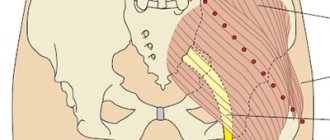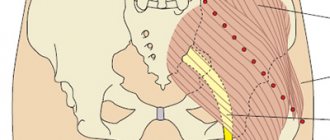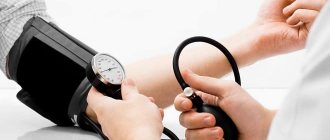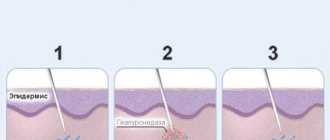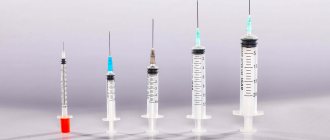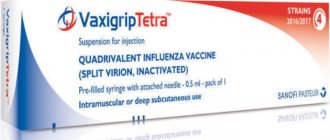Instructions for subcutaneous injections
You will need:
- a clean cloth napkin;
- packaging with the drug in a syringe and alcohol wipes;
- two sterile dry cotton balls (one of them is a spare).
Check your doctor's prescription before giving the injection. Make sure that the drug you purchased or received is appropriate. Focus on the international nonproprietary name - INN. Check whether the drug has expired or whether the syringe is damaged. The solution in it must be the color stated in the instructions and not contain foreign particles or suspensions [1,2].
How to give injections [1,2]:
- Wash your hands with warm water and soap.
- Prepare everything you need in advance. Place a clean cloth on the table, lay out the package with the drug, remove the syringe and alcohol wipes from it. Before using the syringe with the drug, keep it at room temperature for the time specified in the instructions for use. Place two dry cotton balls. Find a comfortable, relaxed position.
- Select the injection site according to the instructions for medical use of the drug prescribed for you. Carefully read the recommended injection sites and inject the drug only into the indicated areas.
- Wipe the selected injection site with one or two wipes. Let the skin dry and discard the tissues.
- Take the syringe with the injection needle and carefully remove the protective cap without touching the needle.
- Form and maintain a skin fold according to the instructions in the instructions for use. Without touching the skin with your fingers, quickly and firmly insert the needle into the fold at a right angle, holding the syringe like a pen. Slowly pressing the plunger, inject the solution until the syringe is completely empty.
- Remove the needle with a vertical movement without tilting it to the sides. Release the skin fold. Apply a dry, sterile cotton ball to the injection site.
- After the procedure, the syringe must be disposed of.
Try to choose a new injection site each time and do not inject the drug into painful areas.
Do not rub or massage the injection site.
Manufacturers include special short needles for subcutaneous injections with kits for injections of PMTRS, so the drug is administered at a right angle [3].
Intramuscular injection: algorithm of actions when performing the procedure
- Select the injection site.
- Treat the patient's skin with antiseptic wipes twice. First treatment - an area of about 10*10 cm is wiped with a napkin in the same direction. Then the second treatment - with a second napkin, the same area is 5 * 5 cm.
- Stretch the patient’s skin in the area of the intended puncture with the thumb and index finger of one hand to increase the volume of the muscle and facilitate insertion of the needle.
- Take the syringe in the other hand (index finger on the piston, little finger holding the needle cannula, the rest on the cylinder), place it perpendicular to the surface of the patient’s body. For intramuscular injections into the thigh and shoulder, the syringe must be held at an angle, like a pen, to prevent damage to the periosteum.
- With a quick, easy movement, insert the syringe needle at an angle of 90 degrees to 2/3 of its length. Pull back the plunger slightly to make sure there is no blood in the syringe.
- Holding the cannula of the needle and pressing the piston, slowly inject the medicinal solution into the muscle.
- Pressing the antiseptic napkin to the puncture site, quickly remove the needle.
- Continuing to press the napkin, lightly massage the injection site.
- Place the napkin and syringe in the waste tray.
- If necessary, apply a sterile adhesive bandage to the puncture site.
Determining the area for subcutaneous injection
In order not to harm yourself, you need to learn how to correctly determine the injection sites and alternate zones [4]:
- arms - the outer surface of the shoulder in the area under the deltoid muscle and not reaching the elbow joint;
- hips - the front surface 10-15 cm from the groin and 10-15 cm from the knee along the center line of the leg; posterolateral surface from the buttock and not reaching the popliteal fossa;
- buttocks: outer upper quadrant (draw two imaginary lines: horizontal - from the place where the intergluteal gap begins to the greater trochanter of the femur and a vertical line perpendicular to it) or slightly higher, as far as subcutaneous fatty tissue allows;
- belly - approximately 5 cm from the navel, outside the linea alba.
Subcutaneous injections should be administered where the subcutaneous fat layer is most developed so that the drug does not inadvertently enter the muscle [4]. Within each zone there is space for multiple injections. As you gain the skill of administering injections yourself, you will be able to distribute zones more and more compactly.
Possible sites for administering drugs into the muscle
Intramuscular injection is performed in one of the anatomical areas:
- superior outer quadrant of the buttock (gluteus maximus)
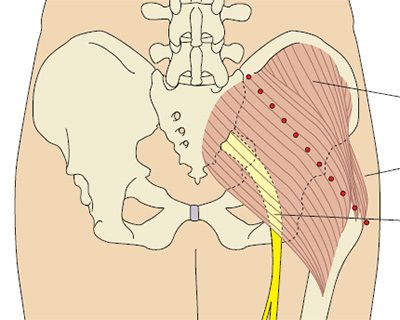
- thigh, medial anterolateral surface (rectus femoris and lateral head of quadriceps femoris)
Read also: Hand treatment for medical personnel: levels, washing technique
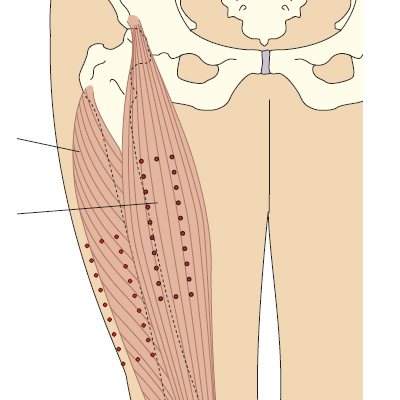
- shoulder (deltoid muscle)
How to avoid complications from subcutaneous injections
Local reactions, such as slight swelling and redness, usually go away on their own within an hour. It is worth paying close attention to complications that do not go away for a long time.
Possible complications, their prevention and treatment [5-6]:
- Induration at the injection site - infiltration - is a common complication with subcutaneous injections. Often accompanied by redness and swelling of the skin, pain. It may not resolve for a long time or, if the course is unfavorable, develop into an abscess or phlegmon. Prevention: alternating zones, observing aseptic rules, slow administration of the drug. When choosing an injection site, you should avoid areas where induration or swelling has already appeared. Your doctor will tell you how to treat such formations. Abscess and phlegmon are eliminated surgically.
- Infectious contamination of the injection site - discharge of pus, soreness, redness, increased local temperature - can occur if the rules of asepsis are not followed. It is necessary to urgently consult a doctor .
- Lipodystrophy (depletion) of subcutaneous fat can occur if injections are given in the same place. That's why it's so important to alternate zones. Another possible cause is that the injection solution is too cold.
- Fainting - to avoid loss of consciousness, do not perform the procedure while standing.
- An allergy to the drug can manifest itself as rashes, swelling, itching, and increased body temperature. If you have an allergic reaction to the drug, you should consult your doctor.
- Mechanical damage nearby tissues is possible due to the wrong choice of injection site or technique. Areas where large vessels and nerve trunks lie should be avoided. First measures:
- If it gets into a capillary, press the injection site with a cotton ball for 5-10 minutes. Can be secured with adhesive tape. If the hematoma (bruise) does not go away within a week, its area thickens or becomes hot, you need to contact a surgeon;
- if it hits the periosteum, without changing the angle of the needle, pull it back;
- in order not to inject the drug into the muscle, be sure to inject into a fold of skin, especially for patients with low weight;
- if the needle touches the nerve ending, local numbness and loss of sensitivity will appear, a lump, inflammation or swelling may occur. Be sure to consult a doctor if you experience shooting pain or decreased functionality;
- If the needle gets into the skin and breaks off, remove the fragment with tweezers. A needle that has completely sunk into the tissue must be fixed, clamping the place where it entered on both sides, and contact a surgeon.
If you adhere to the technique, the risk of complications is reduced. Asepsis, alternating zones and correct position of the syringe prevents many of them.
What is required for the procedure?
It is necessary to give injections in the thigh to yourself only after carrying out high-quality hygiene of the surface of the hands.
To carry out this therapeutic procedure, you will need to have the following items available:
- a sterile disposable syringe with a capacity of 2, 5, 10 ml, complete with a standard medical needle intended for intramuscular administration;
- a bottle or ampoule with a liquid medicinal solution that is indicated for use for therapeutic purposes;
- detailed instructions for using the drug to be injected into the outer thigh (before giving the injection, you must re-read the section on the dosage regimen);
- a pack of sterile medical cotton wool or pre-prepared napkins, tampons, which are used for antiseptic treatment of the skin surface of the thigh;
- ethyl alcohol 96% concentration, intended for disinfection of the tissue area into which the medicinal solution will be injected;
- a pair of medical gloves, the packaging of which is opened immediately at the time of therapeutic manipulations.
A medical needle for performing an intramuscular injection must have a length of at least 3 cm. This will minimize the appearance of unpleasant sensations after its introduction into the muscle tissue, and will also ensure the deepest possible application of the drug.
The components of the injection solution will act much faster, which will significantly increase the likelihood of a positive therapeutic effect.
Using a syringe with a needle that is too short can lead to the injection of an injection solution into the area of subcutaneous fatty tissue, which will subsequently cause local tissue inflammation, as well as the development of other undesirable complications.
Recommendations for disposal of needles and syringes
Syringes used for medical purposes are classified as hazard category “B” (dangerous) or “V” (very dangerous), since they come into direct contact with the biological fluids of sick people:
- Any used instrument will be included under the letter “B”, since it may be a carrier of infection;
- category “B” will include those that were used for patients with established severe diagnoses.
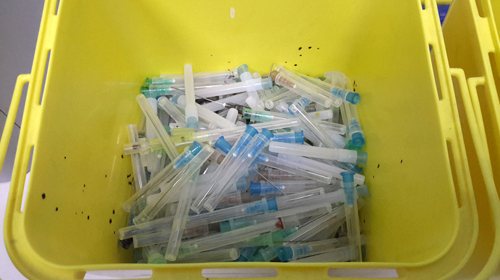
If the recommended safety precautions are not followed, first of all, the employees of medical institutions themselves or the people who were actually involved in administering the injection may suffer. In addition, if improperly disposed of, medical waste of classes “B” and “C” can cause the spread of serious diseases.
In medical institutions, used disposable syringes and needles are subjected to a certain sterilization, followed by destruction using special devices and removal of the remains to special landfills. What can you do at home?
What not to do:
- bend and break needles;
- use someone else's needles;
- keep used syringes out of the container (or a container that replaces it);
- throwing used sharp objects into the toilet;
- store containers with dangerous contents in places accessible to children;
- Throw used syringes into the trash.
The first and main requirement for disposal that must be met is preliminary disinfection. It is recommended to use chlorine-containing products, such as chlorhexidine or regular “Whiteness”. The solution is poured into a specially prepared container. You can use a deep plate.
Rinsing is carried out by passing the disinfectant through the needle channel and the inside of the syringe 2-3 times. Do not remove the needle! The process ends with an empty cylinder, where there should be no visible traces of blood or other body fluids.
The first solution after washing must be drained and replaced with a fresh one.
Next, the disinfectant is drawn into a syringe (through a needle). Only now carefully remove the needle and leave it in the second solution along with the syringe for 1 hour. To prevent the plastic elements of the syringe from floating to the top, use some kind of weight (for example, a plate of smaller diameter).
At the final stage, at the end of the hour, the metal needle, using pliers, must be carefully separated from the plastic base and placed in the housing. Place the remaining plastic part back onto the syringe cone. Next, the syringe plunger now needs to be broken. The picture below shows how to disassemble the syringe for disposal purposes.
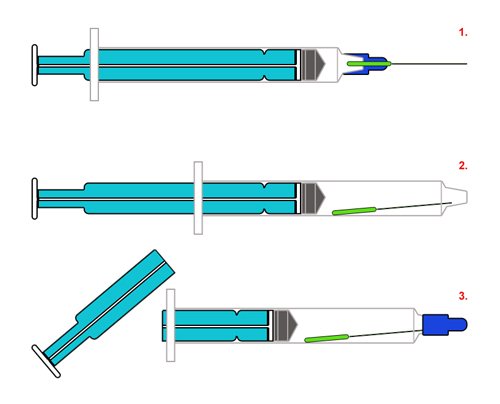
Now you can throw away the syringe, having first placed it inside some, preferably dense, makeshift container. As a container, you can use thick plastic bottles with a wide neck for detergents.
We recommend reading:
- Blood clotting mechanism (INR). Measurement and norms
- How to place an IV?
- How to give yourself an intramuscular injection?
- How to give an intravenous injection?
- Installation of an intravenous catheter and rules for caring for it
- How to prepare solution for injection
- How to make an intradermal injection yourself?
Prices for an intramuscular injection at home in our clinic
To sign up for the service, the client needs to call the operator of our center and tell us what kind of medical care you need. The employee will promptly organize the visit of a team of specialists and tell you about the price of an intramuscular injection at home in rubles. The nurse will arrive exactly at the agreed time, without delay.
Clients prefer to seek help from a private clinic, since in this case they are ready to guarantee:
- Complete anonymity and confidentiality. If the client wishes not to disclose his identity, he will be given this option.
- In their work, doctors use an integrated approach. It is possible to achieve guaranteed good results by fighting the causes of diseases and pathological conditions, and not the consequences.
- For hypodermic injections and all other procedures, modern equipment is used to guarantee safety and quality medical care.
- The clinic has a high trust based on the large number of positive reviews received from current and past patients.
- call a medical team to your home around the clock; specialists are on duty seven days a week and on holidays.
Our clinic specialists offer a range of medical services. In addition to injections, these include droppers, dressings, after consultation with a doctor and a full, thorough examination, a comprehensive therapeutic program can be developed that allows you to cope with various diseases and chronic pathologies. Patients can undergo post-rehabilitation support to cope with any type of health problem.
All staff are fluent in the specifics of conducting medical procedures of any type - from intraosseous to intramuscular injections.
Nurses accurately and accurately enter the veins, leaving no infiltrates, hematomas, or other damage. Management monitors the professionalism of employees and regularly conducts refresher courses.
